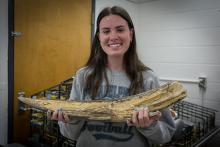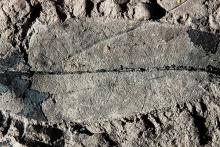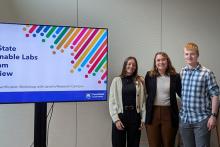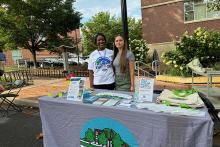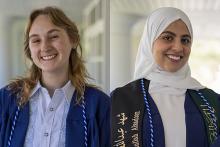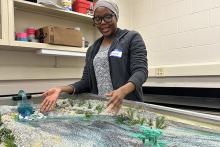- Hometown:
- Hometown:
- Hometown:
It took a series of events for things to fall into place. First, a mastodon had to live its life in the rolling terrain of Iowa, fossilize and be exposed by erosion in a nearby stream some 13,000 years later. Chris Widga, a vertebrate paleontologist at Penn State, had to find a home as director of the EMS Museum & Art Gallery. And Kaitlin Dasovich, a student in geosciences, had to develop a spark for undergraduate research.
For the first time, scientists have discovered fossil evidence of an endangered, living tropical tree species. The unprecedented find was made in Brunei, a country on the large island of Borneo, and reveals a critical piece of the ancient history of Asia’s rainforests, highlighting the urgent need for conservation in the region, according to researchers at Penn State who led the discovery.
Three Penn State undergraduate students who participate in the University’s Sustainable Labs Program were invited to Howard Hughes Medical Institute’s (HHMI) Janelia Research Campus in April to help make the facility’s research labs more sustainable.
Jasmine Fields found Penn State because of its reputation for world-class research. She said she loved science and biology and thought she might become a doctor. Soon after, she became interested in protecting the environment and her passions shifted toward creating a more sustainable world.
Parker Przybylski has been named Penn State's College of Earth and Mineral Sciences’ student marshal, the top graduate overall; and Shahad Alsadoon has been named the college’s engineering honor marshal, the top graduate in an engineering discipline. They will be recognized during the college’s spring 2025 commencement ceremony, scheduled for 1 p.m. on Saturday, May 10, in the Pegula Ice Arena on Penn State's University Park campus.


